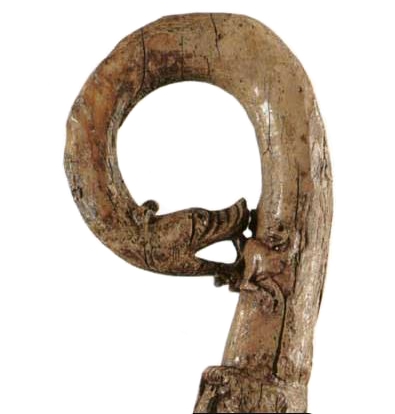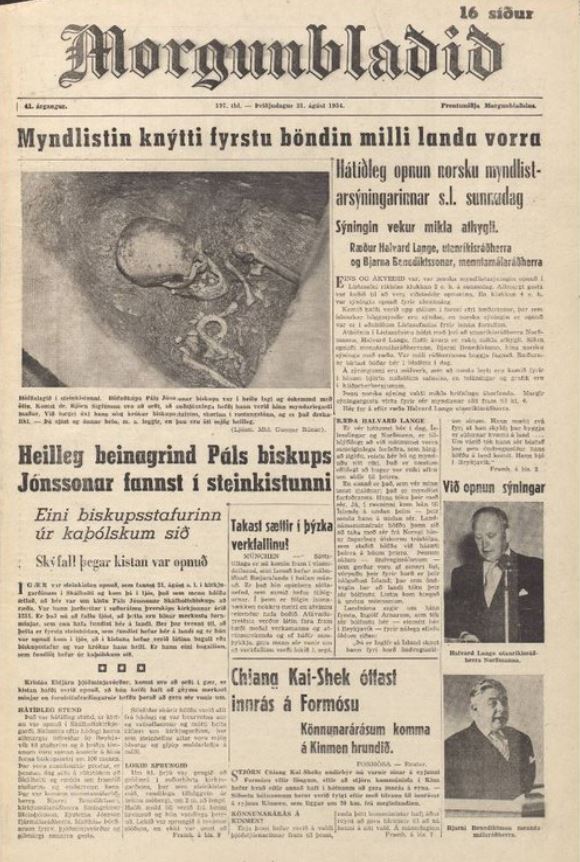The National Museum of Iceland and deCODE, a global leader in analyzing and understanding the human genome, are embarking on an investigation of the remains of Bishop Páll Jónsson, an early 13th-century Bishop in Skálholt Iceland.
His bones were transported from Skálholt, where he has been in resting in a stone coffin, to a laboratory in Hafnarfjörður. By researching the DNA extracted from the bones, deCODE aims to gain insights into the life and culture of people from earlier centuries.
The stone coffin of Bishop Páll Jónsson, who died over 800 years ago, was opened at Skálholt church recently. The now bishop of Skálholt, Kristján Björnsson, conducted a prayer before granting permission for the opening of the coffin and the investigation. Björnsson emphasizes the importance of conducting these procedures with the utmost respect and professionalism. He considers this project to be truly exceptional, as it holds the potential to unlock the nation's history.
The stone coffin was first opened in 1954
Interestingly, this is not the first-time bishop Páll's remarkable stone coffin has been opened. In 1954, when it was initially discovered, the coffin and its contents, including Páll's bones and his bishop's Cain, were deemed a significant archaeological find in Iceland. Páll's bones were briefly exhibited at the National Museum before being transferred to a small wooden coffin, which was then placed within the large stone coffin preserved in Skálholt Church's basement. Now, the bones will depart from Skálholt once again and find their way to the National Museum's laboratory in Hafnarfjörður.
The investigation will be executed meticulously, involving a vacuum chamber to open the coffin, enabling a careful examination of the bones. Comparative analysis will be performed with bones from the 17th and 18th centuries, previously exhumed. Joe Wallace Walser, a specialist from the National Museum's Human Bone Collection, will oversee the research.
DeCODE investigates the DNA of the Bishop
In addition to the study conducted by the National Museum, deCODE will delve into the Bishop's DNA. Walser expresses the intention to undertake ancient DNA research, aiming to unravel aspects of people's lifestyles, including dietary habits and potential regional variations within the country.
In the narrative of Bishop Páll's story, it is documented that a natural disaster occurred during his burial in 1211: "The whole earth trembled and quivered with fear, the sky and the clouds wept, causing significant damage to the earth's produce." Reports suggest that signs from heaven were witnessed during Páll's final moments, as well as peculiar occurrences such as the sea appearing to burn before the land. (this text is complicated to translate - the old Icelandic version follows for those interested: „Jörðin skalf öll ok pipraði af ótta, himinn ok skýin grétu, svá at mikill hlutr spilltist jarðar ávaxtarins. En himintúnglin sýndu dauðatákn ber á sér, þá er náliga var komit at hinum efstum lífsstundum Páls biskups, en sjórinn brann ok fyrir landinu þá; þar sem hans biskupsdómur stóð yfir sýndist náliga allar höfutskepnur nokkut hrygðarmark á sér sýna frá hans fráfalli,“) On August 30, 1954, when Páll's coffin was previously opened, observers recounted heavenly signs, including pouring rain and descending clouds.
Bishop Páll Jónsson
Born in 1155, Páll was a high-born intellectual who became the Bishop of Skálholt from 1195 to 1211. His lineage is traced back to the learned Sæmundur (Sæmundur Fróði), and he was considered one of the most educated individuals of his era. Björnsson remarks, "He was an exceptional individual. During Páll Jónsson's studies in Oddi, he was in the company of the renowned Snorri Sturluson, representing a culturally significant period for our nation. He possessed both secular and spiritual authority, which became evident when he assumed the bishop's position."
As the investigation concludes, bishop Páll Jónsson's mortal remains will return to Skálholt and put in the magnificent 800 kg stone coffin. Páll had the stone coffin made for himself. It was carved out of a rock from a nearby mountain, Vörðufell.
Source:Ruv
Photos: Ruv & Vísindavefurinn



